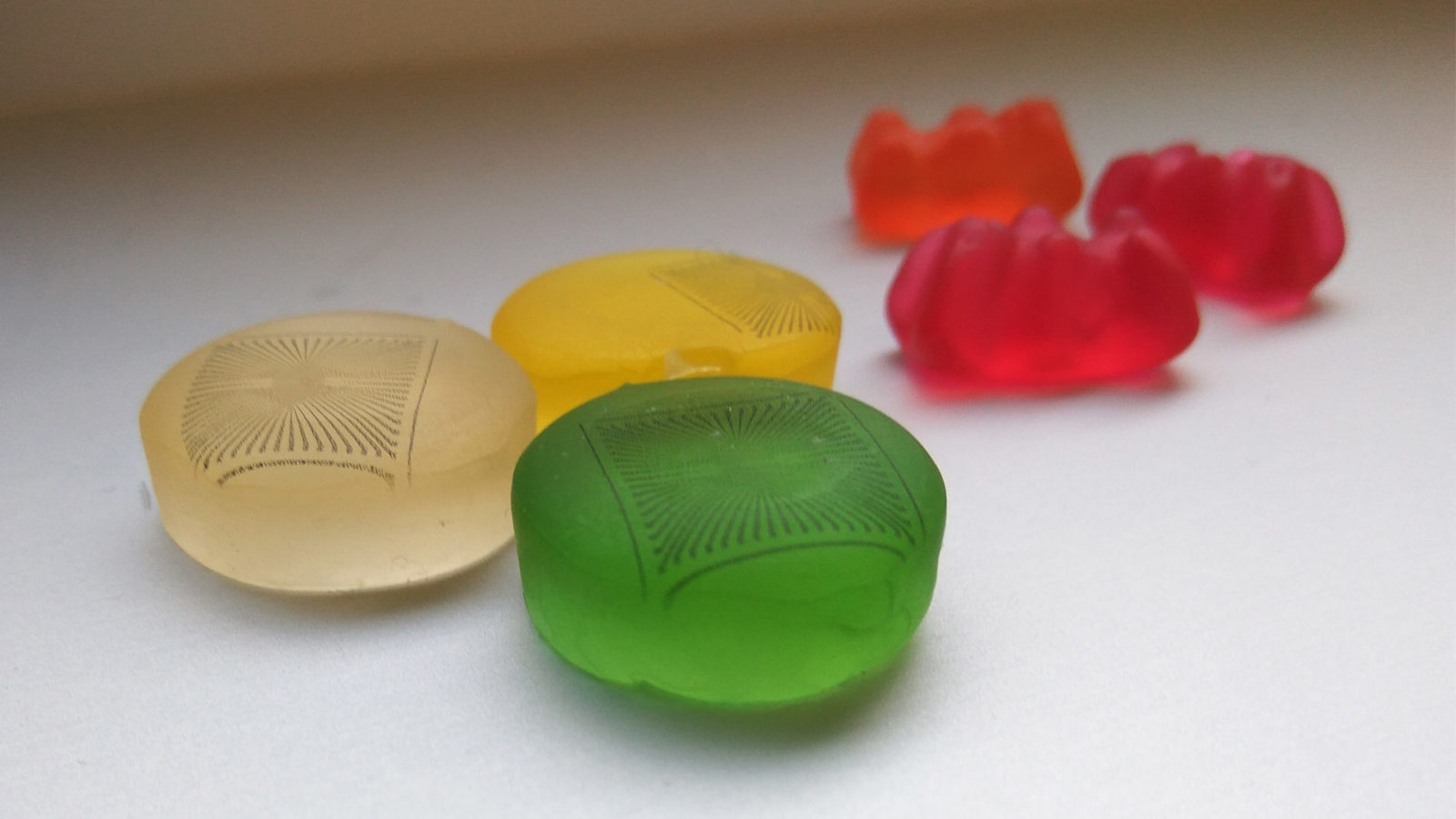Printing Sensors on Gummy Bears
Time:2018-09-27 From:

In the medical sector, microelectrodes can be used to measure and record electrical signals directly in the brain, heart and nervous tissue. However, such highly sensitive applications require soft materials. By now, electrodes could only be attached with great effort to these. Microelectrode arrays usually consist of hard materials like silicon, but the researchers from Germany succeeded in printing them directly onto various soft surfaces.
Big Potential for Medical Diagnostics
TU Munich and Forschungszentrum Jülich have worked together to print on a gummy bear. What first sounds like a gimmick could change medical diagnostics. After all, the scientists around Prof. Bernhard Wolfrum did not print a picture or lettering, but a microelectrode array. These components consist of a large number of electrodes and can measure changes in the electrical voltage in cells, which emerge for example, during the activity of nerve or muscle cells.
But why did the scientists go for gummy bears? They have a characteristic that is particularly important for the use of microelectrode arrays on living cells: They are soft. In their original form, they are made of hard materials like silicon. This results in several problems. When hitting on hard materials, the electrode arrays behave in a way that is extremely critical in contact with living cells: In some cases, this hardness can alter the shape of cells, decrease organ function or trigger inflammation.
Rapid Prototyping with an Inkjet Printer
These problems can be avoided with electrode arrays on soft materials. As a result, they are the subject of intensive research. The methods which have mostly been used before, are relatively time-consuming and depend on expensive special laboratories. “If you print the electrodes instead, you can produce a prototype relatively quickly and cheaply. The same applies if you need to rework it,” says Bernhard Wolfrum, Professor of Neuroelectronics at TUM. “Such ‘rapid prototyping’ allows completely new ways of working”.
Wolfrum and his team use a high-tech version of an inkjet printer, printing electrodes with carbon-containing ink. To prevent the sensors from recording unwanted signals, a neutral protective layer is applied over the carbon webs.
Materials for Different Applications
The researchers tested the method on various materials. They used the soft silicone polydimethylsiloxane, the substance agar and gelatine. The latter was used in form of a gummy bear, which was first melted and then hardened. Each of these substances has characteristics that are particularly suitable for certain medical applications. For example, implants coated with gelatine can reduce undesired tissue reactions.
The team was able to prove that the sensors deliver reliable data by experimenting with cell cultures. With the sensors having an average width of 30 micrometers, they also made it possible to measure the signals of the cells, which is difficult to achieve with established methods.
Multiple Application Possibilities
Printed soft microelectrode arrays could be used in different areas, one of which is the treatment of patients. “In future, similar soft structures could, for example, monitor nerve or heart function in the body or even serve as pacemakers,” said Professor Wolfrum. He and his team are currently working on printing more complex, three-dimensional microelectrode arrays. Furthermore, they are researching printable sensors that don’t react to voltage fluctuations but selectively to chemical substances.

